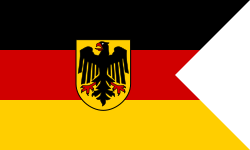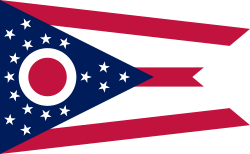- Alfa flag (nautical signal flag for "A")
- Flag of the Vietnamese Pure Land Buddhist Laity Association
- House flag of Socony-Vacuum Oil Company
This article needs additional citations for verification .(November 2025) |
In flag terminology, a swallowtail is either
- a V-shaped cut in a flag that causes the flag to end in two points at the fly; or
- any flag that has this V-shaped cut.
The name comes from the forked tail that is a common feature of the swallow species of birds.



















